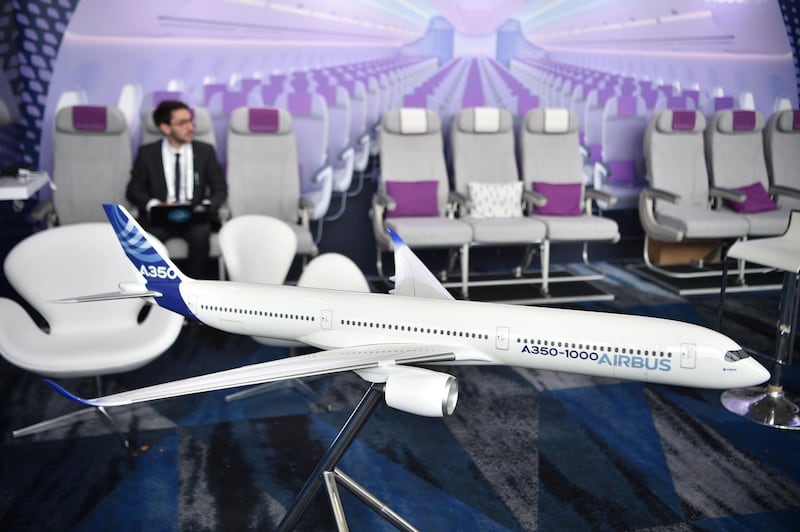The aviation industry is expected to record a profit in 2019 for the tenth consecutive year, the International Air Transport Association said, but it warned of gathering headwinds from higher oil prices, escalating trade tensions and geopolitical friction.
A rise in costs of fuel, labour and infrastructure will be the biggest challenge facing airlines this year, Alexandre de Juniac, director general of IATA, told reporters on Wednesday.
"The last six months have been pretty tough for airlines," Mr de Juniac said. "Global trade is weakening due to trade wars, there's an increase in oil price so that's an increase in costs, geopolitical tensions have led to airspace closures in some regions so that's not positive for aviation."
IATA's December forecast of $35.5 billion (Dh130.37bn) in airline profits for 2019 is widely expected to be revised downwards during its annual meeting in Seoul on June 2. The gathering of airline executives will be set against a backdrop of retaliatory tariffs between the US and China that is threatening to hurt global economic growth this year.
Air cargo volumes in April dropped 4.7 per cent compared with the prior-year period, extending a decline that began in January, IATA said in a report on Wednesday.
"The trend is clearly downwards, with volumes around 3 per cent below the August 2018 peak," it said.
Uncertainty around Britain's exit from the European Union and trade tensions have contributed to a decline in new export orders.
"April saw a sharp decline in air cargo growth and the trend is clearly negative this year," Mr de Juniac said.
For airlines, the situation is worsened by an increase in freight capacity as they grow their fleet. Capacity growth in April outpaced demand for the last 12 months, according to IATA.
IATA's December forecast set a four per cent increase in freight volumes this year, but it is "clear there will be some downward revision there", Brian Pearce, IATA's chief economist said.
The Middle East and Asia-pacific suffered sharp declines while other regions saw modest growth.
Middle Eastern airlines’ freight volumes fell 6.2 per cent in compared to the prior-year period, continuing a slump since the fourth quarter of 2018.
"Freight volumes to and from Europe and Asia Pacific are growing, but a double-digit decline for the key North America market highlights some of the issues facing the region’s carriers," IATA said.
Passenger travel demand rose 4.3 per cent in April compared to the same month last year, but the growth rate is slower than 2018 partly because of trade tensions.
"Driven by tariffs and trade disputes, global trade is falling, and as a result, we are not seeing traffic growing at the same levels as a year ago," Mr de Juniac said.
Middle East carriers posted a 2.9 per cent increase in passenger demand in April.
"In seasonally-adjusted terms the downward trend in traffic growth continues, reflecting broader structural changes affecting the industry in the region," IATA said.
Capacity fell 1.6 per cent and load factors, a measure of seat utilisation, rose 3.5 percentage points to 80.5 per cent.








